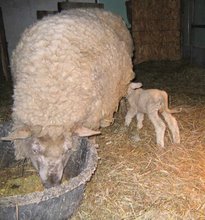Road To Disaster
When I moved to Alaska in 1968 the Kenai Peninsula had only one road to Anchorage from here, and it was two-lane, no shoulders, rough, dark half the year, and wound around through 2 mountain ranges, which had a marked post measuring snowfall of 20-30 feet each winter.
So, in the Fall, everyone just made the trip to Anchorage to stock up on food and supplies for the winter, because if you didn’t, and if a moose didn’t fall on your porch, you might be stuck eating sticks and twigs. The road has improved, and more stores have come to our area, so stocking up has gotten lax.
Last winter I was reviewing my disaster storage food supply. It dawned on me that the very first thing I had purchased to see me through the hard times was 4 cases of coffee. Whoa. That can’t be good. But the realization started me thinking of where I was, health-wise, and where I needed to be, never mind what might happen if the road closed by avalanche or whatever.
I wonder how many times I can look at some piece of advice and not have it enlighten me, but then one day, a light bulb comes on. My meat and milk diet was a road to disaster. The vegetable factor, same information that I had been seeing for years, suddenly becomes relevant and takes over. Eat more vegetables; you hear it your whole life. Weight loss articles, arthritis advice, sleeplessness, energy, Candida, diabetes, cancer, stroke, allergies, and cholesterol: all authors agree that some amount of extra vegetables could help you out. Oh, and please eliminate dairy products and meat.
This is harsh advice to a gal who was raised on a farm, ate home-raised beef and bacon, salt cured ham, and milked cows for ten years with her bare hands. No butter! No milk! What about calcium? That can’t be right. Years of denial can do that to you.
Then one day all the facts line up, and a plant based diet suddenly makes sense. Vegetables are in, meat and dairy are out. Suddenly sticks and twigs seem like the best plan. High nutrient vegetables, fruits, beans, nuts and seeds make better health sense. And dry beans store well, much better than steaks and chops and burger meat when the power goes out, which it always does for a few days in September storms blow trees on the power wires, and November when heavy snow breaks down the system, and January for one resaon or another.
Our road to disaster is wider now, the the pantry has different food in it, but essentially nothing has really changed.
Till next time,
Haylady
##
Thursday, October 10, 2013
Wednesday, September 4, 2013
Blue Power
A horse with hay fever has big
problems. A dog that shakes his head,
licks his paws, and itches miserably also has big problems.
Our dog-owner customers who ask for help will often
ask for something to help relive an irritation in dogs’ ears. A product came on the market that fills a
strong need, namely K-9 Ear Solution by Liquid Health, Inc.
This mixture looks like a quality
response for our customers’ questions. The
ingredients are alcohol, gentian violet, boric acid, and colloidal silver. For at least a decade we have been sharing
the recipe for a home remedy which includes those first 3 ingredients. Blue
Power is blue because of the gentian violet herb, traditionally used as an
antifungal treatment. But people like to buy something ready-made,
pre-mixed with a label and directions, rather than rounding up all the
ingredients and hoping they concoct it right.
When I found the K-9 Ear Solution with the added ingredient, colloidal
silver, it seemed just the right combination for the ears, but it is also
labeled for toes, nail beds, hot spots.
Check it out: Liquid Health at http://www.liquidhealthinc.com
Ear trouble seems more prevalent
than in past years, decades, even. Are
people just spending more time worrying about such things? That would make
sense because they do think of their pets as family. Are there more food
allergies? If so, is the allergy to a
GMO grain, a by-product, or a protein source?
Do dogs that swim get more ear infections? Are breeding or vaccination programs
contributing factors by creating sensitivities?
In dogs used for water work, are grooming styles removing protective
hair from the ears and allowing water to get in? Does any of this contribute to yeast overgrowth?
Whatever the cause of ear infection,
it must be addressed. Otherwise, the
irritation or infection might be temporarily relieved, but not cured. You can keep filling up the gas
tank of a car, but if the tank has a hole in it, the fuel bill will show
it. Fix the hole, and then pump the gas,
so to speak. If not, keep some K-9 Ear Solution on hand for
the dog!
Till next time,
Haylady
Subscribe to:
Posts (Atom)

